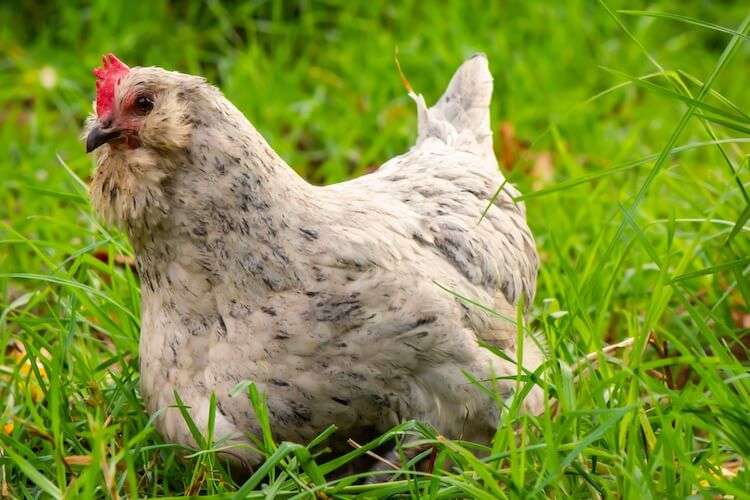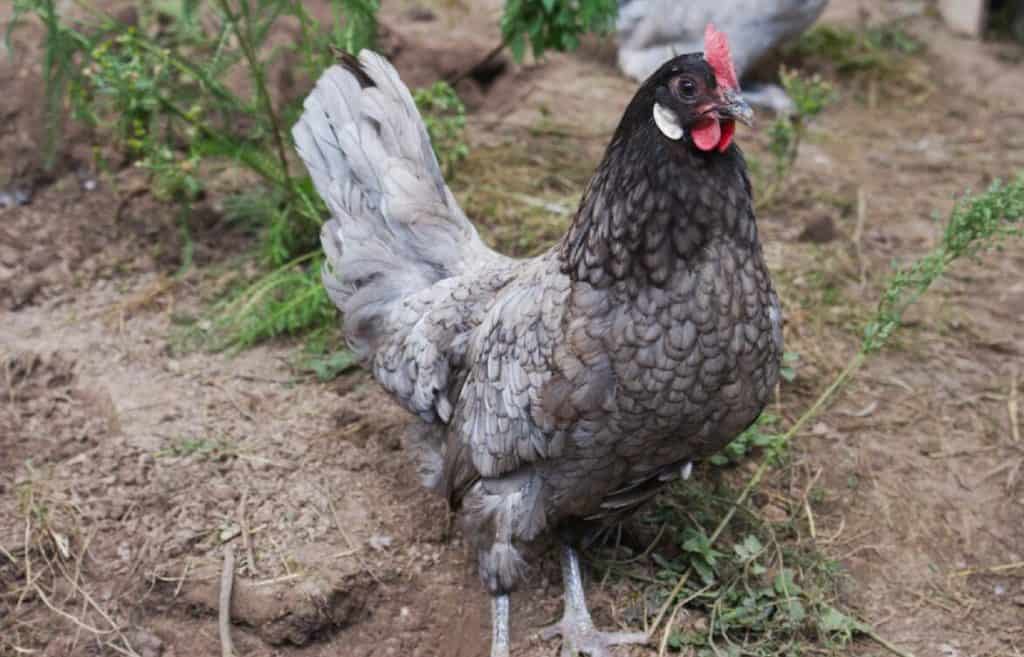
Understanding the reasons behind the existence of particular notable observable features in particular chickens is useful when breeding chickens. These characteristics include skin colour, shank/foot colour, feather colour, and comb type.
Comb Type Genetics
Figure following illustrates the various forms of combs found in chickens. Historical significance can be attributed to the hens comb type genetics.

In chickens, the comb type is mostly determined by two distinct genes located on two distinct chromosomes. There are two types of comb genes: the pea comb gene (P) and the rose comb gene (R). The uppercase letter indicates the presence of the gene, and the lowercase letter indicates its absence. In the heterozygous state, expression of the pea comb and rose comb genes is possible. That is, for a certain type of comb to exist, just one copy of the gene of pea comb or rose comb is needed. As a result, one could consider both genes to be dominant genes.
A rose comb is produced when the gene of pea comb is missing and the gene of rose comb is present in at least one copy. Stated otherwise, a chicken possessing a rose comb can have any of the following two gene combinations: RRpp or Rrpp.
A pea comb is created when the rose comb gene is missing and the pea comb gene is present in at least one copy. There are two conceivable gene pairings in a chicken with a pea comb: rrPP or rrPp.
A walnut comb is produced when each gene is present in at least one copy. There are four conceivable gene combinations for a chicken with a walnut comb: RRPP, RrPP, RRPp, or RrPp.
One comb results from the absence of both genes. The only viable gene combination for a chicken with a single comb is rrpp.
Examine some of the outcomes of comb type breeding to gain more insight into the genetics of comb type. What happens, for instance, when a chicken with the gene combination rrPP, which indicates that it breeds true for pea comb, crosses with a chicken with the gene combination RRpp, which indicates that it breeds true for rose comb?
In rose comb breeding, a parent can only provide the Rp gene pair because both parents pass on one of the two genes that control comb type to their progeny. Similarly, just one gene pair—rP—can be contributed by the parent that breeds true for pea comb. As a result, all offspring from such a pairing would have walnut combs since they would all be heterozygous for both alleles (that is, RrPp), as illustrated in Figure. On the other hand, offspring of birds with walnut combs bred to other birds with walnut combs might have children with combs of a different kind, meaning that the descendants would not breed true in this instance.
Feather Color Genetics
Understanding how poultry achieve their various colors is essential to comprehending the genetics of feather colour. There are primary and secondary colour patterns in poultry. A colour pattern that shows up on individual feathers is called a secondary pattern. Secondary patterns include mottling, single and double lacing, and so forth. Primary patterns are colour schemes that cover the chicken’s whole body. The Silver Columbian pattern is one such. The Silver Columbian chicken has white feathers with hints of black around the wings, tail, and neck. The pattern is called a main pattern since it does not appear on individual feathers.
Starting with the background color—which is determined by the E-locus gene—one can breed chickens with a certain colour scheme. This background is essentially altered by the additional colour and (secondary) pattern genes. Feather colors and patterns are the result of multiple genes interacting with one another. There are three primary feather colors, if white and black are considered colors: red (gold), white, and black. In technical terms, white and black are not colors; rather, white is the sum of all colors, and black is the absence of light reflection in the visible spectrum.
Black and red dye are diluted, highlighted, or covered to colour chicken feathers. For example, the gold gene is coupled with the dominant mahogany (red-enhancing) gene in the Rhode Island Reds.

Shank/Foot Color Genetics
The combination of colors in the surface and deeper layers of the skin gives the shanks and feet of chickens their visible colour. Three genes essentially determine the colour of the shins and feet; one of these genes is sex-linked and found on the Z sex chromosome. The shank/foot colors resulting from the main gene combinations are displayed in the table. Remember that every gene is present in two copies in each chicken. Since other genes also affect the colour of the shank and foot, the table should only be used as an indication. For instance, the Z sex chromosome has the sex-linked barring gene, B, which is a potent inhibitor of skin melanin pigment. If barred Plymouth Rock chickens did not possess the sex-linked barring gene, they would not have light shanks. Female Barred Plymouth Rocks (carrying sex chromosomes ZW) usually have darker shanks than males (carrying sex chromosomes ZZ) due to the dosage influence of the barring gene in the male.


Dark Skin Color Genetics
Figure depicts a silkie chicken, which is distinguished by its dark skin tone. Higher than usual melanin levels cause dark skin. Connective tissue becomes pigmented due to fibromelanosis, an activator of pigment cells. The dark skin phenotype is inherited by a combination of factors including the fibromelanosis gene (Fm) and dermal melanin inhibitors, like the sex-linked Id dermal melanin-inhibiting mutation. The Fm gene is present in black-skinned, connective tissue-containing chickens, whereas the Id gene is absent.
An Id mutation coupled with the Fm gene produces a chicken lacking any discernible skin pigmentation. The degree of melanization brought on by the gene of Fm may also be impacted by other dermal melanin inhibitors. Furthermore, several genes that affect the colour of plumage also affect the colour of skin. One example of these genes is the E-locus allele, which may affect how the Fm gene is expressed. Nonetheless, there are fibromelanotic silkies with partridge, blue, white, and black feather patterns.





